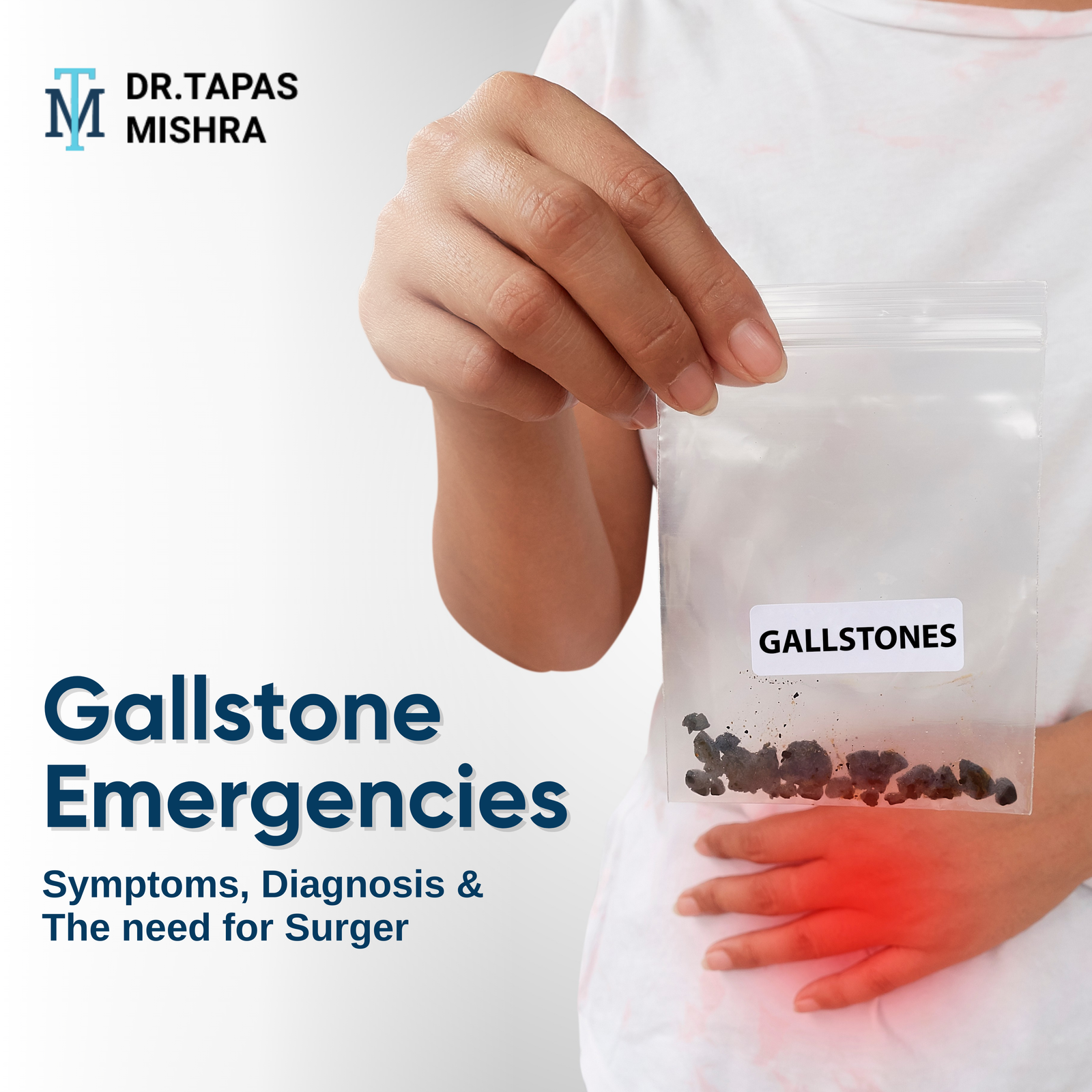By Dr. Tapas Mishra | Senior Consultant – Advanced Laparoscopic GI & Bariatric Surgery
Gallstones were once considered a health issue mostly seen in older adults, especially women over 40. But today, gallstones are increasingly being diagnosed in younger adults, even those in their 20s and 30s, raising concern among health professionals.
So, why is this happening, and what can young adults do to protect their gallbladder health?
What Are Gallstones?
Gallstones are hardened deposits of bile that form in the liver and stored in Gallbladder when the person is fasting . They can be as small as a grain of sand or as large as 4 to 5 cm. Many people with gallstones experience no symptoms, but when a stone blocks cystic duct or bile duct, it can trigger a gallbladder infection and complications. A sudden, severe pain in the upper abdomen associates with Nausea, vomiting, fever or jaundice
Why Are Young Adults at Risk?
The rise in gallstones among younger adults can be linked to several lifestyle and health changes:
- High-fat, processed diets
- Rapid weight loss through crash diets
- Obesity and sedentary habits
- Hormonal imbalances, including those caused by birth control pills
- Family history of gallbladder disease
These factors affect how bile is produced and stored, making it more likely for stones to form.
Common Symptoms to Watch For:
- Pain in the upper right abdomen
- Discomfort after eating fatty foods
- Nausea or vomiting
- Pain radiating to the back or right shoulder
These signs should never be ignored, especially if they occur frequently after meals.
What Can Be Done?
Lifestyle changes like healthy eating, regular physical activity, and maintaining a stable weight can help prevent gallstones. If you’re already experiencing symptoms, early diagnosis is key.
In many cases, ultrasound imaging can quickly identify the presence of gallstones. For those with recurrent pain, laparoscopic gallbladder removal is a safe, minimally invasive option that offers long-term relief.
Take Your Symptoms Seriously
Gallstones in young adults are on the rise but with timely lifestyle adjustments and medical support, they are completely manageable. Stay alert to the signs, and don’t hesitate to seek professional guidance when needed.









